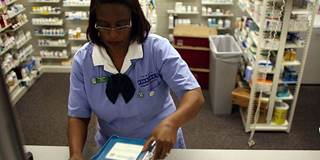If the abuse of antibiotics does not end, we will soon find ourselves without drugs to treat bacterial infections effectively. While some steps in the right direction are being taken, a global rating system for drug companies would give them strong incentives to combat the problem.
MEXICO CITY – From the discovery of penicillin in 1928 to the introduction of the last of the main groups of antibiotics in the 1960s, humanity’s capacity to fight pathogenic bacteria has been transformative. But, over time, the number of antibiotics to which bacteria are susceptible has been dwindling, and some pathogens have become resistant to most or all existing drugs. As a result, once-treatable infections are becoming deadly again.

MEXICO CITY – From the discovery of penicillin in 1928 to the introduction of the last of the main groups of antibiotics in the 1960s, humanity’s capacity to fight pathogenic bacteria has been transformative. But, over time, the number of antibiotics to which bacteria are susceptible has been dwindling, and some pathogens have become resistant to most or all existing drugs. As a result, once-treatable infections are becoming deadly again.